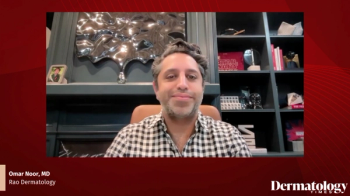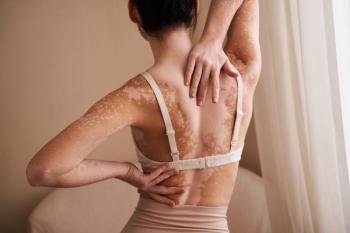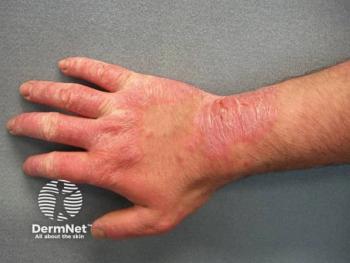
How to Integrate Psychiatry Tools for Optimized Dermatologic Care
Key Takeaways
- Dermatologic care often involves psychological complexities, requiring providers to manage patients' emotional struggles without formal psychiatric training.
- Effective strategies include managing talkative or anxious patients, setting boundaries, and recognizing when to refer patients for psychiatric care.
Evan Rieder, MD, shares effective strategies to enhance dermatology practice efficiency by addressing psychological aspects of patient care and setting professional boundaries.
Psychological Aspects of Dermatologic Care
Rieder began by noting that dermatology is commonly associated with psychological complexity. From anxiety over skin cancer risk to body image concerns in cosmetic dermatology, clinicians frequently manage patients’ emotional struggles without formal psychiatric training. As many patients are unaware of the mental health undercurrents driving their dermatologic complaints, “we have to sort of do some sort of ‘psychiatry in disguise,’” according to Reider.
Managing Talkative or Anxious Patients
One common scenario is the overly talkative or anxious patient. Rieder advised allowing patients to speak uninterrupted for 2 minutes, a tactic that fosters trust while limiting disruption. After that, clinicians can regain control by asking, “Can I ask you a few important questions now?” Using closed, yes or no questions can steer the visit productively. For more complex cases, he emphasized setting clear expectations early in the visit, limiting the scope to one main issue, and scheduling follow-ups for further evaluation.
Setting Boundaries and Preserving Provider Energy
Maintaining boundaries is vital in high-volume dermatology practices. Rieder encouraged providers to avoid oversharing on social media and to be cautious with “friends as patients.” Friendly patients can blur lines, especially in aesthetics, which increases medicolegal risks. Use secure apps if contact is necessary and avoid giving out personal phone numbers. When boundaries are crossed, consider behavioral contracts to formalize expectations.
Identifying and Referring Mental Health Conditions
For patients with delusional parasitosis or body dysmorphic disorder (BDD), direct psychiatric referral is often challenging.
"This is probably the most common question I get: How do I get someone to see a mental health provider?” Rieder said. “It's really, really hard. [It] just takes time, right? Maybe it’s not always going to work. So, you have to recognize your own limitations here... you have to recognize that for many of these patients, you will never be able to help them.”
Instead, Rieder recommended building rapport, offering off-label treatments, and slowly introducing the idea of talk therapy to reduce defensiveness and distress.
Leveraging Psychological Tools in Practice
Small interventions can improve patient comfort and reduce procedural anxiety. Rieder recommended in-office tools like vibratory devices (eg, Buzzy ice packs), guided autonomous sensory meridian response, breathing apps, and music during procedures.2 These evidence-based, low-cost methods enhance the patient experience and increase overall satisfaction.
Red Flags and Final Thoughts
Rieder warned providers to be alert to patients overly concerned with minor flaws, especially when the distress doesn’t match clinical findings, which is an indicator of potential BDD. “Beware the patient who loses control, and don’t take things personally,” he cautioned, referencing patients whose outside stressors can often manifest as in-clinic emotional outbursts.
Ultimately, Rieder's message was clear. Dermatology providers of all levels are regularly managing mental health issues, whether they recognize it or not. By adopting psychologically informed techniques, setting boundaries, and knowing when to refer, clinicians can improve both patient care and provider resilience.
Looking for more insights from industry leaders like Rieder? Check out our
References
1. Rieder E. Top Psychologically informed tips to maximize practice efficiency. Presented at: Fall Clinical PA/NP 2025 Conference; May 30-June 1, 2025; Orlando, FL.
2. Yosipovitch G, Canchy L, Ferreira BR, et al. Integrative treatment approaches with mind-body therapies in the management of atopic dermatitis. J Clin Med. 2024;13(18):5368. doi:10.3390/jcm13185368
Newsletter
Like what you’re reading? Subscribe to Dermatology Times for weekly updates on therapies, innovations, and real-world practice tips.



















